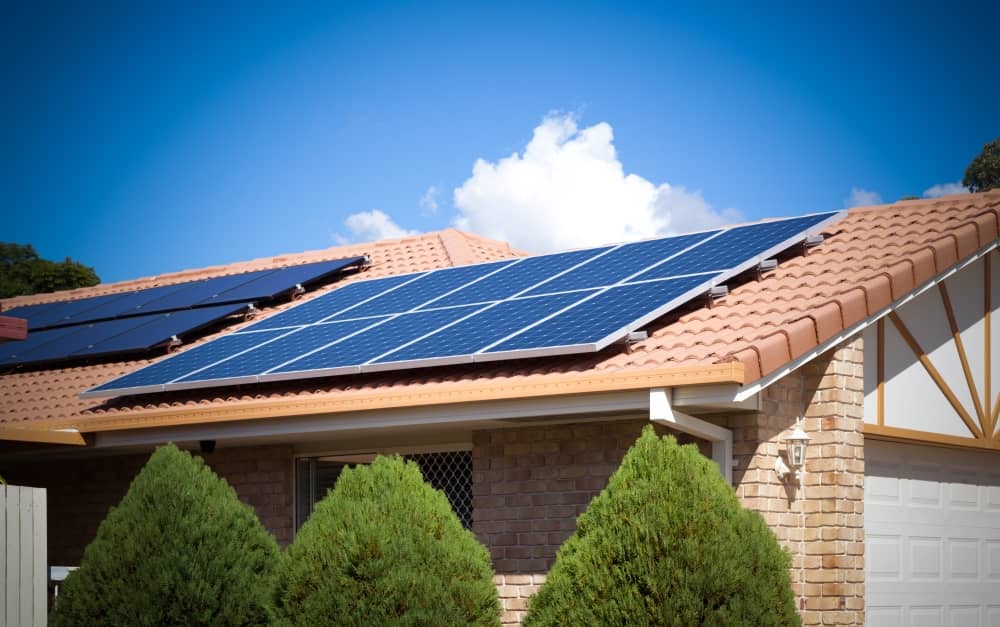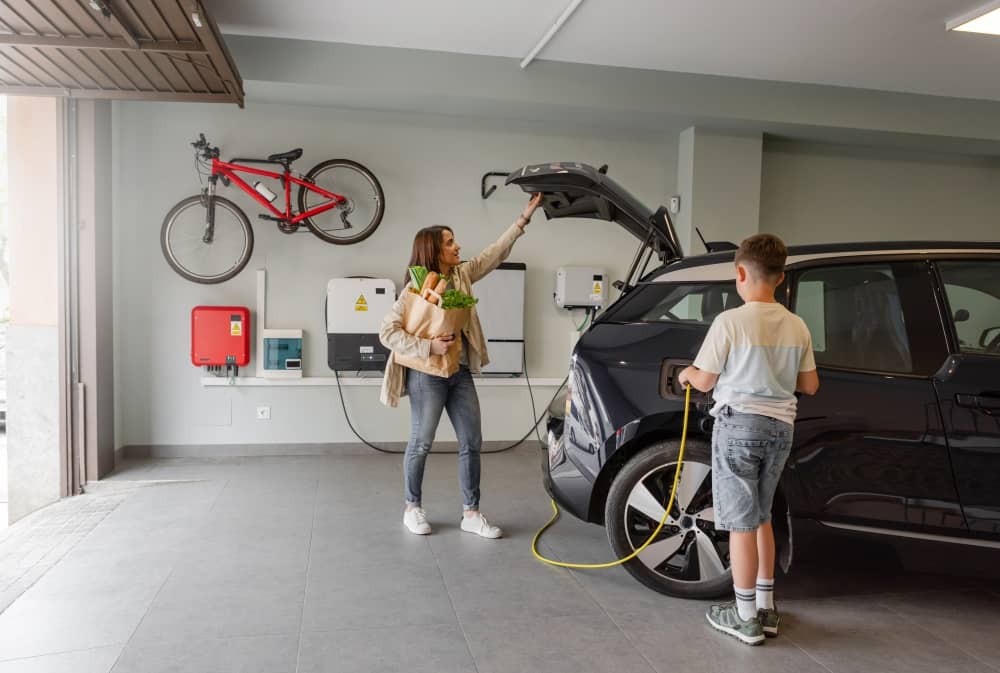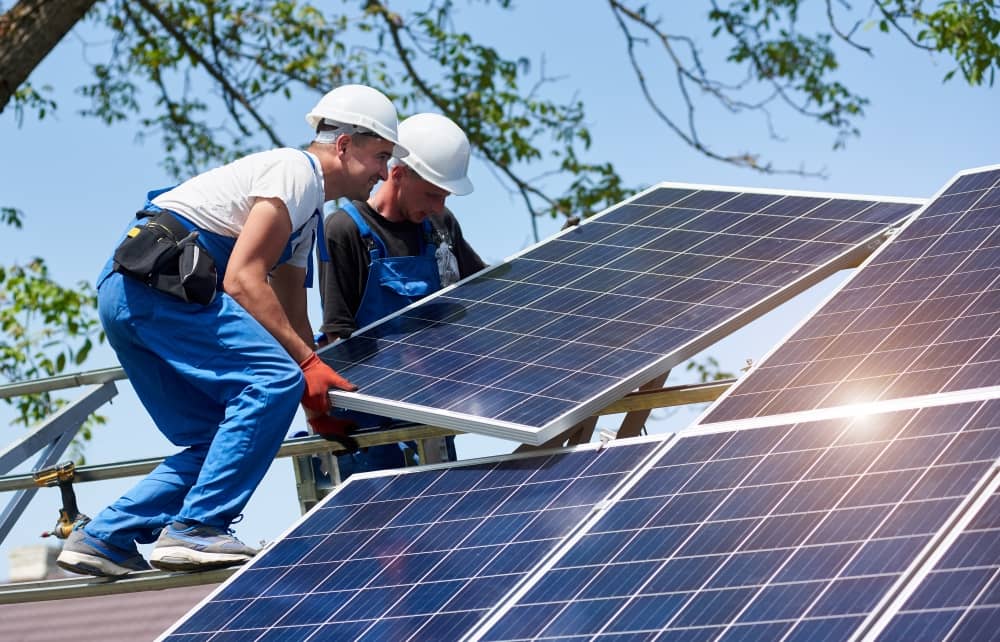With sky-high petrol prices, it’s no surprise that an increasing number of Australians are switching to electric cars. In fact, in 2023, approximately 8.4% of new cars sold are EVs, a remarkable 121% increase from the previous year. EVs are also becoming more affordable, especially when combined with government incentives, such as WA’s $3,500 rebate for the first 10,000 buyers of zero-emission vehicles (ZEVs).
If you already have solar, the case for making the transition from a petrol or diesel car, to electric vehicles becomes even more compelling. However, before you take the plunge, it is crucial to understand how charging your EV with solar power actually works.
Is it truly a feasible option that can save you more money in the long run? If so, how much? We’ll discuss these topics and more in this blog post.
Getting Your Home EV-Ready
Ensuring your home is EV-ready is essential, even if you have yet to make plans to get electric equipment, appliances, EVs or a home EV charger installation right away. The goal is to prepare and certify that your home’s wiring is prepared for the new demands that may come from EV chargers and other related components.
The extent of upgrades you may need will vary depending on specific circumstances. For instance, a newer home outfitted with a 200A switchboard or metre box is sufficient for new electric appliances, including an EV. You also have to decide on the charger you’re going to use, which is split into four tiers or levels:
- Level 1: Suitable for home charging using a regular 240-volt wall socket connected to single-phase alternating current (AC)
- Level 2: Designed for home charging from a wall box connected to a single or three-phase AC
- Level 3: Primarily available in public charging stations, offering fast direct current (DC)
- Level 4: Available at commercial charging stations only for super-fast and ultra-fast DC charging
A single-phase power supply can charge an EV at 7.2 kWh, adding about 40 km per hour. Meanwhile, three-phase power supports fast charging, typically around 22 kWh, which adds approximately 120 km per hour.
How Many Solar Panels Do You Need to Charge an Electric Vehicle?
To estimate an EV’s energy consumption, you can compare it to how you gauge fuel efficiency in petrol vehicles. In other words, you can equate kWh per kilometre to litres per kilometre.
As with petrol, the number varies between EV models. However, as a general rule, the average is about 6 km for every 1 kWh in the battery pack. Therefore, if you drive 50 km each day, you should ensure you have charged 8 kWh before taking the car out for a ride.
Remember that solar panels can become inefficient due to different reasons, such as debris or if they are of poor quality. In that case, you should expect over 10% charging losses, meaning 1 kWh of energy generated is not equal to that exact number but rather 900Wh. Our recommended solution is to install more solar panels than what’s advised to offset the charging losses.
Charging Electric Cars at Home with Solar
If you have solar installed, you can charge your EV with a home charger via a standard electric socket. Alternatively, you can pick fast charging using a wall charger. It’s a convenient option made possible by your solar PV system’s inverter, which can ensure your home utilises the produced electricity first rather than the power from the grid.
On days with sufficient sunlight, the panels can cover almost all, if not all, of your energy needs, including EV charging and powering other appliances. However, during periods of limited sunlight, such as cloudy days or at night, you will have to rely on the grid to meet your requirements. Unless you have battery storage, the most efficient way to use solar is during the day, particularly during peak hours, to maximise the solar power.
How Much Can I Save with Solar Charging My EV?
Going solar is the cheapest option when charging electric cars. It’s even better if you have a smart EV charger, which lets you match the cost to your solar Feed In Tariff, typically about 8c/kWh or $0.48 daily.
In contrast, charging directly from a wall socket without solar will cost you about 30c/kWh or $1.80 daily. Based on these rates, the average cost of at-home electric car charging for a 60 kWh battery is approximately $18.20.
Choosing rooftop solar for EV charging is a wise financial decision. It can even be cost-free, mainly if you charge during peak sunlight hours when the sun is at the highest point in the sky.
How Long Does It Take to Charge an EV?
The answer to this question is quite complex, as there are several factors to consider, including the vehicle itself and the battery. However, it is the type of charger that has the most significant say of all. Let’s break it down:
- Level 1 Charger at 10A: This charger offers the slowest rate with its standard 10A power, delivering about 12 km of range per hour. Therefore, if you charge your car for 10 hours, the level 1 charger will add 120 km of range to your EV.
- 15A Power Point Charger: This charger can add up to 18 km of range per hour. That’s because it can charge at almost 3 kW compared to a 10A’s 2 kW charging rate. You will, however, need a special plug to get a 15A powerpoint.
- Level 2 Charger (7 kW): This charger requires a specialised EV charger, enabling you to charge at a 7 kW rate. That means you can get about 40 km of range per hour with a single-phase connection. For a three-phase, you get a 22 kW charging rate, allowing you to have 130 km of range per hour. Expect to pay $1,700 to $2,500 for these chargers, and make sure you have extra cash handy in case a switchboard upgrade is necessary.
Fast charging, available at home and public charging stations, lets you fully charge your EV in just 30 minutes to an hour. On the other hand, standard chargers take longer, typically requiring 12 hours or more for a full charge.
Traditional vs Smart Charging
The traditional method of charging an electric vehicle at home involves using a standard charger connected to an electrical grid. You plug it in, as you would with any other device, and charge your EV until the battery is full. It is a convenient and straightforward approach, but it can lead to high energy bills, especially if you charge at peak times.
An alternative is to go the smart charging route, which you integrate with your solar system. It is a sustainable, cost-effective solution that enables you to utilise excess solar energy. The key is to charge with solar during peak production hours to reduce strain on the grid. This strategy also helps you avoid peak usage charges that significantly inflate your already high power bills.
Based on statistics, private vehicles travel for 13,250 km per year. Smart charging your EV with solar can potentially save approximately $7,000 or more (depending on your vehicle and usage). That is in comparison to fully charging your car using grid electricity.
Even better, if you charge with solar for your daily commute, you can save an additional $500 to $1,800 yearly (again, depending on the vehicle and model).
No matter what electric vehicle you have or may choose, or its battery capacity, it’s nice to know the huge range of benefits. From saving money on electricity bills, reducing your carbon footprint, and gaining energy independence when charging with solar. With these benefits and more, it’s no wonder many Australians who own EVs are now installing rooftop solar. Consider investing in our residential solar packages for a cost-effective and environmentally sound solution.




